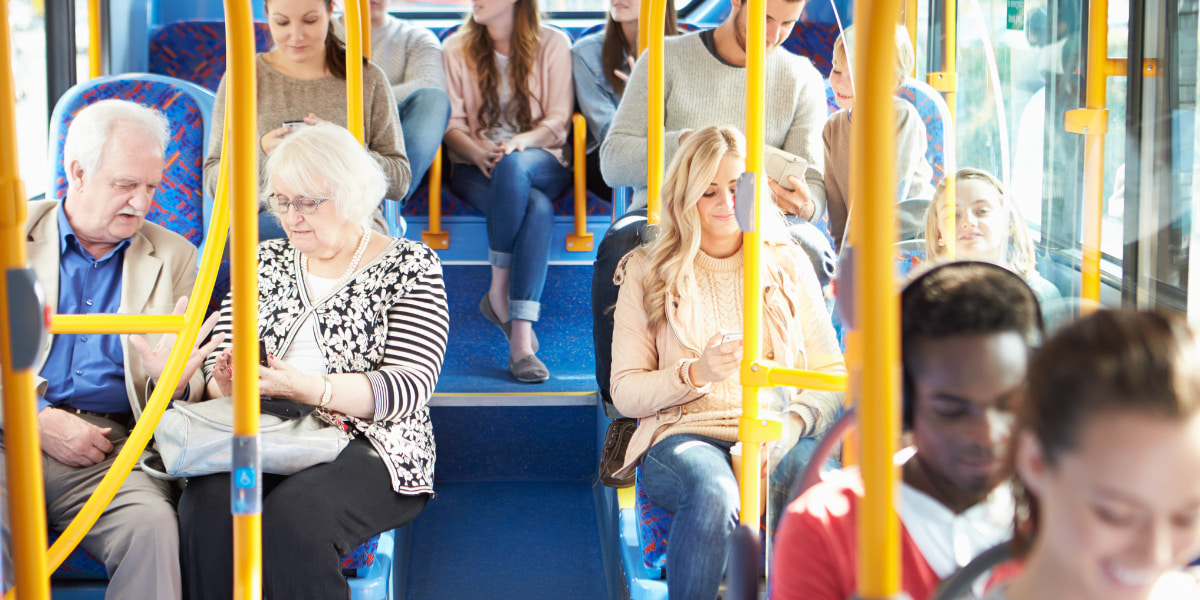
Pausing to genuinely thank someone can feel small, but it shapes every interaction. Without realizing it, using thank you etiquette influences how we see others—and how they see us in return.
Daily life brings hundreds of quick exchanges. Just one sincere thank you changes an entire tone. When done thoughtfully, these simple words strengthen trust, smooth over tension, and set a baseline for respect.
In these next sections, you’ll find practical tips, scripts, and examples that transform your thank yous into connection builders. Let’s break down what thank you etiquette really looks like—and how to put it into action.
Saying Thanks Sets the Stage for Openness in Every Conversation
Using thank you etiquette from the outset lets you steer conversations in a positive direction. These words signal attention and value to the other person, making further connection more likely.
For instance, thanking a colleague before providing feedback demonstrates your respect for their work. It opens the door to more productive dialogue and helps create a space where everyone feels heard.
Scripts for Immediate Positive Impact
Words like, “Thank you for sharing your idea during that meeting,” offer validation and invite additional sharing. People notice authenticity in tone and body language, so say these words with eye contact and a calm voice.
Try following gratitude with a specific detail: “Thank you for your help on the report—your insights clarified the project.” That anchors the interaction in concrete appreciation.
Regularly practicing this formula starts turning routine chats into safe, open connections. Each time you thank someone, focus on one specific action or quality to make your gratitude memorable.
Nonverbal Thank Yous That Deepen Impact
Not all thank you etiquette relies on speech. A brief smile and nod delivered right after someone passes you the salt, for example, communicates thanks in seconds.
Handwritten notes are especially effective at establishing warmth, even if it’s a quick “Thanks for coming in early!” left on a coworker’s desk. The tactile choice stands out and lingers.
Combine gestures—for instance, a handshake with eye contact and a thank you—for compounded positive effect. People tend to reciprocate with openness and trust.
| Context | Verbal Thanks | Nonverbal Cue | Next Step |
|---|---|---|---|
| Workplace feedback | “Thank you for your input today.” | Smile plus nod | Ask for more thoughts |
| Customer interaction | “Thanks for choosing us.” | Open posture | Offer help |
| Social gathering | “Thank you for coming.” | Warm handshake | Introduce to others |
| Family dinner | “Thank you for cooking.” | Set table together | Clean up as team |
| Email response | “Thank you for your email.” | Prompt reply | Address each question |
Turning Small Thank Yous Into Stronger Team Dynamics
When a team member reliably uses thank you etiquette, group communication flows better. Acknowledging help or input leads to higher morale and greater willingness to collaborate.
Gratitude isn’t reserved for major milestones. Saying “Thanks for picking up that last task” builds a positive loop, encouraging others to pitch in the next time without hesitation.
Bridge Gaps by Recognizing Daily Efforts
Teams that express daily thanks spot fewer misunderstandings. For example, “Thank you for flagging that deadline—saved us backtracking.” It directly reinforces desired behavior without sounding like hollow praise.
- Express gratitude for small contributions: “Thank you for updating the file list.” This keeps documentation errors low and boosts group reliability.
- Recognize extra effort: “Thanks for working late.” Demonstrates leaders notice, rewarding initiative.
- Encourage peer-to-peer gratitude: Remind everyone to thank each other for simple requests, not just formal milestones.
- Use thank you etiquette in feedback: Pair constructive notes with a thank you to reduce defensiveness.
- End meetings with a team-wide thank you: Signals closure and respect, not just routine dismissal.
The more a team thanks one another, the greater their resilience through stress. It’s less about frequency and more about real connection.
Quick Checks to Keep Workplace Thanks Sincere
- Always link gratitude to a clear action: “Thank you for covering my shift Saturday.” It grounds appreciation in reality.
- Avoid automatic replies: Mix up your responses so they match the person and effort level.
- Praise publicly when appropriate: “Thanks to Sam for organizing the supplies—everyone benefited.”
- Move beyond email: Oral thanks during standups carry more weight and foster camaraderie.
- Check tone and timing: Sincerity matters—don’t rush or sound distracted.
These habits foster an environment where everyone feels seen and valued.
Transform Complaints into Growth By Leading with Thanks
Starting tough feedback with genuine gratitude—“Thank you for staying flexible this week”—sets a supportive frame for necessary corrections and reduces defensiveness.
Try acknowledging the positives before shifting to changes: “Thank you for your quick response; next, let’s look at refining the format.” Most people remain open to feedback when they sense fairness rooted in thank you etiquette.
Linking Gratitude to Constructive Direction
Begin with: “Thanks for keeping the project moving while I was out.” That baseline recognition reinforces commitment. Then, add: “Let’s coordinate next time to streamline our updates.”
This order maintains collaboration, even when navigating performance issues. Replace generic “good job” with a thank you tied to specifics. People take next steps more seriously when gratitude leads the conversation.
Test this phrasing: “Thank you for troubleshooting last-minute issues. For our next rollout, let’s schedule earlier QA.” Consistently using thank you etiquette produces more positive change and less resistance in future discussions.
Practicing Self-Awareness in Your Thanks
Notice if you default to quick, impersonal “thanks.” Check if your body language aligns, or if you’re multitasking and distracted. Instead, pause to make eye contact or add the person’s name.
Aim for variety in your thank you phrases so they don’t blur into background noise. Integrate small details unique to each person’s contribution. Authenticity stands out and encourages ongoing dialogue.
Weekly, reflect on your thank you etiquette. Ask yourself whether each thank you matched effort level and context. Adjust from there—genuine appreciation resonates and guides behavior over time.
Building Trust Rapidly Through Timely and Detailed Gratitude
Quick gratitude builds trust faster than generic compliments. Using thank you etiquette right after someone helps keeps their effort fresh in both minds.
Saying, “Thanks for getting this to me before the deadline!” right when the work is shared links appreciation to the concrete action, rewarding reliability and encouraging future follow-through.
Simple Timing Shifts That Make Thanks Stick
The closer the thank you is to the helpful act, the stronger the reinforcement. Delay too long, and it feels like an afterthought instead of real respect.
Noticing a little detail, like “Thank you for keeping the format consistent,” tells someone their extra care didn’t vanish. They’re more likely to repeat this attention next time because it’s associated with a timely thank you.
Commit to a habit: the moment you benefit, offer thanks. Then describe exactly what mattered, so the effort—and the gratitude—becomes a lasting team habit.
Expanding Trust Beyond Your Close Circles
Thank you etiquette isn’t reserved for coworkers you already know or like. Use it as a bridge in new teams or unfamiliar groups: “Thank you, I appreciate your support during my first week.”
Authentic, timely thanks help disarm skepticism. People are more likely to share valuable input and speed up relationship building when they feel included through gratitude.
In tense meetings, a quick thank you for transparency or careful listening can turn a competitive dynamic cooperative. It models vulnerability and mutual respect from the start.
Tailoring Thank Yous to Fit Different Cultures and Settings
Not every thank you lands the same way in every group. Observing thank you etiquette means tuning your style to workplace culture, personal preferences, and the unique setting of each exchange.
Some groups value formal thanks: “I appreciate your time today, Mr. King.” Others prefer casual acknowledgment, like, “Thanks, Jamie—got it!” Reinforcement matches local customs and expectations.
Adapting to Virtual and Remote Environments
Include gratitude in chat and email using brief but specific thanks, such as, “Thank you for sending the agenda, it helped me prepare.”
Use reactions—thumbs up, emojis—or GIFs sparingly to add warmth and tone that can be lost when face-to-face isn’t possible. Still, written thanks must remain direct and tailored.
Ask teammates how they prefer acknowledgment. This lets you practice thank you etiquette with extra care, respecting everyone’s communication habits and personalities.
Recognizing Cultural Nuances in Thank You Etiquette
In certain cultures, protracted thanks might feel uncomfortable or due only to group efforts, while others expect individual gratitude. Adapt your approach to avoid making anyone feel singled out or embarrassed.
Mirror the expressions and frequency used around you if you’re unsure. If someone uses humor or formal phrasing, try matching their style the next time you thank them.
The respect shown by honoring local thank you etiquette always outweighs sticking with your own habits. Observe, adapt, and watch your social capital grow.
Frequently Asked Questions
Is it possible to overuse thank yous at work?
Yes, frequent automated gratitude can lose impact. Personalize each thank you by anchoring it to a concrete deed or unique context, keeping your appreciation both authentic and effective for ongoing workplace relationships.
What if someone never replies when I thank them?
People may not always respond to thanks, especially in larger or virtual settings. Continue using thank you etiquette sincerely; authentic appreciation isn’t always reciprocated outwardly, but it still shapes a positive and respectful environment.
Are handwritten thank you notes outdated?
Not at all. Handwritten notes demonstrate extra effort, standing out in digital communication. Use them for moments where you want your gratitude to feel memorable and have a lasting, positive impression on the recipient.
Should I thank someone for just doing their job?
Recognizing reliable performance encourages consistency and morale. Thanking someone for expected contributions, in moderation and with specifics, reinforces a positive team culture and sets a standard for mutual respect and accountability.
Does tone matter as much as the words?
Absolutely. Sincere tone, natural delivery, and matching body language signal genuine appreciation. Flat or distracted thank yous can feel obligatory; mindful delivery ensures your gratitude resonates emotionally and builds meaningful rapport.

Practical Travel Manners
Practical travel manners keep your journeys respectful, helping you connect with cultures and leave positive impressions everywhere.

